2022 Mayor’s State of the City:
Mayor Marianne Meed Ward
State of the City 2022
January 27, 2022
Full Speech Transcript
 Welcome everyone and thank you for joining us today for the 2022 State of the City address.
Welcome everyone and thank you for joining us today for the 2022 State of the City address.
While I was genuinely looking forward to being together in person this year, I am grateful we could come together virtually and safely as we deal with the constant shift and flexibility required in these unique times we live in.
The Burlington Chamber of Commerce has once again found a way to carry on this local tradition and allowed me the opportunity to share important information with our community about where we are at and where we are going here in the great City of Burlington.
I want to thank the Chamber and today’s sponsors for bringing this event to life and for making it free to everyone this year. It takes a lot of hard work behind the scenes and I know our entire community appreciates it. Thank you.
I also want to note that today is International Holocaust Remembrance Day and in honour of that, our Burlington Pier will be lit yellow to make this important day one of reflection and remembrance.
THE YEAR 2022
 Focusing for a moment on the year that just passed and the many challenges we have collectively faced both here in Burlington and around the world, it is tremendously important to take the time to appreciate those who kept us safe, healthy and supported.
Focusing for a moment on the year that just passed and the many challenges we have collectively faced both here in Burlington and around the world, it is tremendously important to take the time to appreciate those who kept us safe, healthy and supported.
Our essential workers in healthcare, police, fire and emergency services, long-term care, education and front-line retail who we could not have survived without.
Our generous and compassionate community support groups, such as food banks and mental health resources, and the volunteers and donors who keep them going.
The public servants and city staff who not only kept plowing snowy roads and maintaining busy parks but also launched and ran extremely successful vaccination clinics.
Business owners across the city who demonstrated remarkable resilience and flexibility in the face of a constantly shifting landscape and all the residents who did everything they could to shop local and help keep them going.
And our city partners who never rested in finding ways to support our business community with advocacy, funding, personal protection equipment (PPE) and rapid tests, such as the Chamber, Burlington Economic Development and our local BIAs.
I often say one of the silver linings of the past two years has been seeing the way people and organizations have come together and collaborated like never before with the shared goal of supporting our community. The strength of these relationships will carry forward for many years and we are absolutely a better city for it.
One of the most important things we can do right now is focus on the good – and gratitude is a big part of that. Never underestimate how much a simple text or email with a few kind words could mean right now. It makes all the difference and I speak from a lot of personal experience here.
So, as we embark further into 2022, I encourage everyone to take the time each day to recognize the people who are filling our buckets with positive energy and good ideas, with notes of kindness and support, and with the hard work and flexibility that continue to help get us through difficult times.
AGENDA FOR SOTC ADDRESS
 Burlington City Council – including myself as Mayor – had an ambitious to-do list when we took office more than three years ago. Working closely with city leadership and staff, we hit the ground running in 2019 and — despite a global pandemic — the business of the city has forged ahead.
Burlington City Council – including myself as Mayor – had an ambitious to-do list when we took office more than three years ago. Working closely with city leadership and staff, we hit the ground running in 2019 and — despite a global pandemic — the business of the city has forged ahead.
I want to give you an update on where we are at in delivering on those commitments. I want to note that as I speak to that and share some photos of what we have done throughout this term so far, if you see any photos where we are close together and unmasked, be assured that those were taken early in the term as council and I have been very cognizant of all the pandemic protocols that have evolved since March 2020.
As is often the case, many new priorities also came to light since we took office, and I will fill you in on how those that have been incorporated into our mandate.
And as we approach the fourth year of this term, I want to share where we are headed looking forward. Brighter days and exciting projects are ahead as we support the continued evolution of this amazing city.
GROWTH IN BURLINGTON
 In 2018, our community made it clear that their No. 1 concern was ensuring growth was better managed in Burlington. People wanted us to put a stop to the excessive heights and density of new buildings that were being approved — especially in our downtown core — and preserve the history, character and small-town feel that makes our city so wonderful. People told us they wanted greenspaces protected – and more of them created with new builds – that transit needed to be prioritized to help mitigate growing traffic congestion, and that neighborhood amenities and community centres had to be a priority.
In 2018, our community made it clear that their No. 1 concern was ensuring growth was better managed in Burlington. People wanted us to put a stop to the excessive heights and density of new buildings that were being approved — especially in our downtown core — and preserve the history, character and small-town feel that makes our city so wonderful. People told us they wanted greenspaces protected – and more of them created with new builds – that transit needed to be prioritized to help mitigate growing traffic congestion, and that neighborhood amenities and community centres had to be a priority.
Council and I heard these voices loud and clear and committed to better manage the trend we were seeing in overdevelopment going forward. And I want to very clearly say that mitigating overdevelopment and working towards responsible development are not the same thing as being “anti-development”.
I know there are some folks who wish we didn’t have to grow much at all and I want to talk a little bit about that.
In the past few years, I find more and more people I talk aren’t fully aware that Burlington and Halton do need to keep growing for the benefit of our city and region.
The Province of Ontario sets growth targets for each municipality – these are mandatory growth targets – and we will be expected to accommodate more than 70,000 new people in the next 30 years. That’s a lot of people. Our neighbours in Oakville and Milton are expected to take even more than that.
And why wouldn’t people want to live here? Burlington is an amazing place to work and play, and it is no surprise people continue to want to come here and raise a family. I know many of us also want our grown children to be able to afford to stay here and build their own families here too.
So we will grow – but the bottom line is as our city continues to evolve, future growth and development in the City of Burlington will happen in the right places and at the right scales to better reflect the vision of the community — and this change is the success I am most proud of in this term of council.
RIGHT PLACE. RIGHT SCALE. RIGHT VISION.
 The way we are achieving this is two-fold.
The way we are achieving this is two-fold.
One way has been to update our Official Plan to better reflect the ways we want to grow, and that includes heights and densities, and amenities and greenspace — and the other has been to remove a key obstacle that was consistently allowing overdevelopment to continue unabated by provincial land tribunal decisions and that was to adjust our Major Transit Station Area (MTSA) and Urban Growth Centre (UGC) designations and put them where they truly belong: near mass transit.
Council and I wasted no time after taking office and enacted an Interim Control Bylaw in early 2019 to pause development while the appropriate work could be done to assess the role and function of the downtown John Street bus terminal and the Burlington GO station on Fairview Street as Major Transit Station Areas, examine the planning structure, land-use mix and intensity for the lands identified in the study area, and update the Official Plan and Zoning bylaw regulations as needed for the lands identified in the study area.
After this work was dutifully completed by staff and in concert with external consultants, and with many opportunities for public input and feedback, we proposed and were successful in obtaining approval by the Province to adjust the boundaries of the MTSA and UGC away from the downtown and focus on the Burlington GO station. This change was solidified in writing by the Minister of Municipal Affairs and Housing in November of 2021. That was something that had never been done before by any municipality.
While a handful of developments already in the appeal process will still require us to fight for the community’s vision at the Ontario Lands Tribunal (OLT), going forward we will be able to avoid the tribunal’s pattern in past decisions of using the MTSA and UGC to further justify excessive height and density in our downtown core.
We have many thoughtful and innovative developers who want to help us in these goals and I have spoken with many of them throughout this term of council, such as at monthly meetings with the BILD leadership team, through speaking engagements, such as the Urban Land Institute, and through 1:1 meetings with developers. We are finding ways to work together to help our community grow while still respecting the community’s vision and we will continue to do so.
City Council this term also supported establishing the Burlington Lands Partnership (BLP) as a new organizational structure with key priorities to:
- maximize business development opportunities and advance future economic growth and job creation;
- implement major city building projects that enhance the quality of life for all citizens; and
- deliver an increased supply of affordable housing through proactive long-term strategies and innovative partnerships.
The BLP has already advanced the due diligence to inform the offer to purchase Robert Bateman High School and created a strategic partnership opportunity filter to be used as an analytical tool focused on due diligence to ensure consistency and rigor in evaluating opportunities for land development and partnerships in the future.
STRATEGIC GROWTH
 In the past three years, we have remained a growing city, we have just been getting more strategic about it:
In the past three years, we have remained a growing city, we have just been getting more strategic about it:
- We currently have 68 active major development applications at different stages of review in our system as you can see on this development tracking map that is available on the City’s website;
- To keep up with demand, we have already added 15+ staff to our planning and building teams to help manage that growth and help applicants get to ‘yes’ or ‘no’ much faster;
- In 2021, we saw 1,539 building permits issued, including 69 industrial, 155 commercial, 68 single-detached dwellings, 41 townhouses and 23 apartments and condo projects; and
- 543 new dwelling units were created here in Burlington and all this development is a staggering $468 million in construction value here in our city.
Our new Official Plan for Burlington – and our Regional Official Plan Amendment (ROPA 48) with fellow Halton partners (Oakville, Milton and Halton Hills), who have been amazing collaborators — will work to help us build complete communities and neighborhoods that accommodate growth in ways that protect established neighborhoods, create parks and greenspace to engage and thrive in, and reduce the need for cars through proximity to transit, bike and walking paths, and new community amenities.
I’m so incredibly proud of the work all our staff and council have done to get us to this point and I’m excited to see Burlington’s growth and evolution continue in ways that honour our history, preserve what we hold dear, and accommodate innovative and well-suited development for generations to come.
BUSINESS GROWTH
 Despite an incredibly challenging landscape since March 2020, due to the pandemic, especially in our restaurant and service sectors, we have also seen many local businesses continue to grow and thrive — and new ones locate their businesses here in Burlington.
Despite an incredibly challenging landscape since March 2020, due to the pandemic, especially in our restaurant and service sectors, we have also seen many local businesses continue to grow and thrive — and new ones locate their businesses here in Burlington.
More than 3,000 new jobs have been created in our city so far this term (1,573 in 2019; 843 in 2020; and 849 in 2021 = 3,265 total).
When it comes to new businesses and company expansions, 220 have happened this term (100 in 2019; 55 in 2020; and 65 in 2021 = 220 total), including Tandia Financial Credit Union’s global head office; Endress & Hauser began building their new $28 million, 47,000 sq. ft. customer experience centre; Deloitte’s 36,000 sq. ft. expansion, and MNP and Aslan Technologies’ each moving forward with 20,000 sq. ft. expansions.
Brock University will be moving a campus here to our city and finally bringing our first undergraduate post-secondary education campus to Burlington (Note: DeGroote is a graduate level program – MBA and Executive Level programs only – part of McMaster) – I am excited to see how this unfolds and creates opportunities for students as well as local businesses. My work continues with this sector to attract additional post-secondary institutions.
For our rural residents and businesses, I am happy to say we are supporting (through a third-party provider) essential high-speed Internet network installation in 2022 with some funding support secured from the federal government, as well.
The Red Tape Red Carpet initiative of 2019 partnering with local business owners to identify obstacles to relocation and growth here and creating 22 actionables to implement to make things easier, including the ability to submit development applications in digital format and the creation of a new business development liaison position at City Hall to help shepherd applicants through complex projects, and the in-progress creation of a one-window service centre on the main floor of City Hall and construction for that is getting ready to start next week!
FISCAL RESPONSIBILITY
 Constituents and businesses repeatedly expressed concern they wanted a Mayor and Council who would be fiscally-responsible, keep taxes low, and ensure every dollar was spent wisely at the City.
Constituents and businesses repeatedly expressed concern they wanted a Mayor and Council who would be fiscally-responsible, keep taxes low, and ensure every dollar was spent wisely at the City.
Cities that are experiencing growth like Burlington and much of the GTA suffer increased tax pressures, as we saw in Milton, who is growing even faster than we are, with their 9% tax increase in 2019. Growth does not pay for itself, especially in the short-term. Before new taxpayers can start contributing, we have to build roads, sewers, sidewalks, parks and infrastructure.
Our community has high expectations for the levels of service we provide, as they should. This is one of the best cities in Canada to live in and our ability to deliver on essential services for our residents and businesses has to remain high.
It is important to mention the pandemic has considerably hurt the revenues of all municipalities as revenue-generating areas, such as transit and recreation programs, all saw huge declines through repeated lockdowns. Even with additional support from other levels of government, the losses were substantial.
Despite these pressures, we have continued to invest in our city and infrastructure and there have been many improvements that benefit every corner of Burlington thanks to council and staff:
BUDGET & TAXES
 When comparing ourselves to other Halton municipalities, such as Oakville, Milton and Halton Hills, along with other nearby cities, like Mississauga and Hamilton, Burlington’s tax increases are reasonable and on par. They were slightly higher than the average in 2021, but in 2020 and 2019, they were slightly lower.
When comparing ourselves to other Halton municipalities, such as Oakville, Milton and Halton Hills, along with other nearby cities, like Mississauga and Hamilton, Burlington’s tax increases are reasonable and on par. They were slightly higher than the average in 2021, but in 2020 and 2019, they were slightly lower.
When looking around the province, it is useful to consider how much a homeowner pays in taxes as a percent of their home value. Here in Burlington, we have one of the lowest rates in the entire province, coming in at just 0.779% and now at 0.008% for 2022.
Our present council has maintained similarly low tax increases in our term than the previous mayor and council, who did not have a pandemic to content with nor the associated lost revenues. The two terms preceding us saw average increases in the city portion each year of 3.84%, including three years with increases over 4% and as high as 4.5%. This term of council has so far seen an average of 3.90%, including a 2.99% increase in 2019 that was the lowest increase residents had seen in 9 years.
Looking back as far as 2011, there has not been a year where the city portion of the tax increase has been lower than inflation. It is always higher. Except for this year – 2022. Inflation is well above 4% (according to the Bank of Canada) and our tax increase is 3.90%.
When combined with Region/Education, the number gets even lower. The previous mayor and council only achieved a combined tax increase lower than inflation once in two terms. We have already achieved this three times in just one term.
The 2022 budget is focused on maintaining and enhancing city services, ensuring the city’s assets are in a state of good repair, and addressing the continued impacts of the COVID-19 pandemic.
Burlington has established our own self-imposed debt policy limit that is half the provincial limit, at 12.5%. The city’s current limit is as at 9.3%. The Region of Halton issues debt on behalf of the local municipalities, and we continue to enjoy the Region’s AAA credit rating.
CITY’S 2021 COMMUNITY SURVEY RESULTS
 Moving on to high-service levels — since 1998, the City of Burlington has regularly conducted a community survey to uncover resident satisfaction. The surveys typically happen every 2-4 years, with the most recent surveys being in 2015, 2019 and 2021. The statically-valid survey provides an important opportunity for benchmarking and to monitor progress of community measures over time. This time, for the 2021 Community Survey, 755 Burlington residents were randomly selected and interviewed using either a residential landline or cell phone number.
Moving on to high-service levels — since 1998, the City of Burlington has regularly conducted a community survey to uncover resident satisfaction. The surveys typically happen every 2-4 years, with the most recent surveys being in 2015, 2019 and 2021. The statically-valid survey provides an important opportunity for benchmarking and to monitor progress of community measures over time. This time, for the 2021 Community Survey, 755 Burlington residents were randomly selected and interviewed using either a residential landline or cell phone number.
Overall, I’m thrilled to report the results of the survey were highly positive.
There was a rating of 95% satisfaction with the overall quality of services in the City of Burlington. This rating was an increase from 2019 and is equal to the highest satisfaction rate compared to any of the previous measurements of resident satisfaction in the last 13 years. And to get that result during the pandemic is all the more remarkable.
Services that were identified as strengths included: Fire Services, parks, sports fields, trails, festivals and events.
Of the surveyed respondents, 71% said they would support a tax increase to maintain current service levels.
Gains were made in all areas of community engagement, including having enough opportunities to provide input, the City’s ability to engage with residents, being welcoming to public opinion in decision-making, using public input in decision making and decisions made reflect the voice of the majority of residents. There were sharp increases in these areas in 2019, compared to 2015, and 2021 continues to see positive growth.
There was substantial growth of 34% of those indicating they now currently find out about city programs, services and initiatives from their ward councillor or mayor and I’m really proud that our communications have added value to our community.
When asked the open-ended question, “What is the one issue you feel should receive the greatest attention from your Mayor and members of Council?”, the most frequent responses were around growth, especially in the downtown, related to high-rises, and the implications it might have on traffic congestion/traffic lights and transportation. This was followed by affordable housing, economic development and infrastructure.
Other common issues included parks/nature/paths, public transportation, the COVID-19 pandemic and climate change, as well as parking management, bylaw enforcement and transit service.
THE ENVIRONMENT
 During the last campaign and throughout this term, residents consistently and emphatically asked us to address the global climate crisis at a local level by protecting greenspace, trees and rural farmland, mitigating flood risk, and reducing our carbon footprint.
During the last campaign and throughout this term, residents consistently and emphatically asked us to address the global climate crisis at a local level by protecting greenspace, trees and rural farmland, mitigating flood risk, and reducing our carbon footprint.
One of the first things this council did upon taking office was declare a Climate Emergency. What that means is that all the decisions we make are done through a climate impact lens. Whether it’s how we allocate our annual budget or the types of infrastructure we choose to build, the protection and preservation of our environment is always a driving force.
What that looks like in practice are things like the community-based Climate Action Plan that was approved at Council in April of 2020. The plan includes seven key program areas to help the community transition away from the use of fossil fuels, particularly for buildings and transportation.
Council’s workplan From Vision to Focus supports the Strategic Plan targets for city operations to be net carbon neutral by 2040 and to work towards being a net carbon neutral community.
Staff are actively involved in partnerships with the Bay Area Climate Change Office and Council, and the Halton Climate Collective.
We have partnered with the Centre for Climate Change Management at Mohawk College to develop a home energy efficiency retrofit (HERO) program that will work to reduce household carbon emissions.
We have committed to reducing the GHG emissions from City operations overall by 21% by 2024 and 100% by 2040.
We’re using renewable energy at City facilities, including solar, such as a solar wall at Fire Station No. 8, and leasing roof space for solar generation at Mainway Arena, Transit and Roads, Parks and Forestry buildings.
Work on Burlington’s Integrated Mobility Plan is now underway. The plan will be built around eight pillars that, when implemented, will result in a new era of transportation that:
- Provides a wide range of options for getting around regardless of age, means or ability, including walking, cycling, public transit and automobiles; and
- Uses compact modes of travel like buses, bicycles and walking to efficiently move larger number of people.
We invested an additional $100,000 in annual tree planting and protection in/since our 2019 budget to contribute to the health of our tree canopy and help mitigate the loss of trees we have seen due to the Emerald Ash Borer
We launched and are continuing to evolve the private tree bylaw to protect against unnecessary removal of large older trees or requiring fees to replace them – will be reviewing the fee structure in March, as well as the process to make it more streamlined and ensure it is not unreasonably punitive.
We established the Aldershot Quarry Community Liaison Committee to create an ongoing dialogue with transparency and environmental accountability between one of our local quarries and the city and nearby residents.
We approved a resolution that we will not open the Greenbelt for development or compromise public safety protections by setting aside the Clean Water Act, as permitted in the Province’s proposed Bill 66 Open for Business legislation. After hearing voices from across Ontario, the Province eliminated the ability to bypass legislation from the bill.
Just last month, we were notified the City of Burlington has been approved for $200,000 we applied for from the Green Municipal Fund for the initiative: City of Burlington Zero Carbon Feasibility Studies for Four City Buildings.
As a member of the Conservation Halton board, we successfully pushed back on egregious changes the Province wanted to make to strip Conservation Authorities of their power and compromise some of their revenue generating services.
Prior to COP26 in Glasgow, the City also signed on to participate in the Race to Reduce campaign recognizing the City’s target to become a net carbon zero community by 2050.
And the City is working in collaboration with a number of staff and community stakeholders to develop Climate Resilient Burlington: A Plan for Adapting to Warmer, Wetter and Wilder Weather, expected to be completed and presented to City Council later this year.
MITIGATING TRAFFIC ISSUES
 With a growing city that attracts new residents and businesses, traffic congestion is an issue that council consistently hears about from our residents. We know traffic flow on major streets is a concern, as is parking and noise from loud vehicles all across the city.
With a growing city that attracts new residents and businesses, traffic congestion is an issue that council consistently hears about from our residents. We know traffic flow on major streets is a concern, as is parking and noise from loud vehicles all across the city.
Burlington City Council approved a refreshed version of the 2016 Strategic Plan in May 2021. This version keeps the strategic directions consistent. They are A City that Grows, A City that Moves, A Healthy and Greener City and An Engaging City.
To support a city that moves, we know new development needs to be focused close to major transit, that is something our successful work to move our MTSA and UGC near the GO Stations has supported.
We also know new developments, particularly high-rises, require planning that builds complete communities around them, and that means parks, community spaces, shops and amenities that don’t require getting in your car. All our work on our Official Plan and Regional Official Plan recognizes this goal and supports these types of builds going forward.
We approved free transit for children under 12 and seniors at off-peak hours Monday to Friday (Council recently made the pilot seniors’ program permanent), and free transit for low income residents who qualify for the Region’s SPLIT subsidized transit pass. Free student transit is also on the table for next term of council. We also added more buses and drivers for conventional transit, and an additional bus and driver for Handivan service to increase frequency on main routes to better align with 15-minute GO service and respond to increased demand.
Parking concerns evolved after the pandemic began with extended residential street parking becoming more essential as people worked from home, and different needs surfacing downtown where shoppers needed to do quick curbside pickups from their favourite stores. The city responded effectively by flexing the rules around both in order to better support residents and businesses across the city, and offering periods of free parking at the pandemic’s onset as well.
Traffic noise is an ongoing issue we are tackling with our partners at the Halton Regional Police Service. Their aptly named “Project Noisemaker” has used proactive enforcement and in 2020 alone the campaign saw more than 1,420 charges laid for things like having no muffler or making unnecessary noise.
We are looking at adding two Level 2 chargers and one Level 3 charger to downtown municipal lots. These are the two highest level chargers in terms of speed and will complement the existing 12 chargers we already have in the downtown which accommodate up to 24 electric vehicles. One is included in the Elgin promenade project in Lot 1 with the other two locations planned for Lot 8 and Lot 5.
Our parking sensor project is ongoing with plans to complete installations in all downtown lots by the end of 2022. The sensors will be integrated with existing lot signage to accurately display and update parking lot numbers and the amount of available spaces. More importantly, the data collected from the sensors can be utilized to inform strategy on parking requirements for new and pending construction projects. The information provided by this system will enable us to work more strategically with developers and advocate for better parking planning when new construction developments are proposed in the downtown.
Last year, Council approved 40 km/h speed limits in 13 neighbourhoods throughout the city with a focus on improving road safety in residential areas, where our most vulnerable road users are.
The city also implemented technology to better monitor traffic flow and travel times along its major corridors allowing for improved identification and response to unexpected traffic congestion.
And finally, the City is nearing completion of the development of the Integrated Mobility Plan (IMP), our 30-year transportation plan, that looks to how people will move now and into the future. The plan is heavily rooted in public consultation and we have relied on the vision and values of the community to shape an integrated mobility network that focuses on sustainability and equity, placing greater reliance on enhanced levels of transit and active transportation. This is the first-ever transportation plan for the City, and we are one of the first Ontario municipalities to apply an integrated lens to our mobility planning approach. The IMP will be complete this summer.
So, a lot of great work being done by teams here at the City to get us moving more smoothly and keep us moving.
RESPECT AT CITY HALL
 Residents throughout Burlington raised concerns for many years of not feeling heard, respected or welcome at city hall. They identified a combative, unprofessional atmosphere where they didn’t feel comfortable coming forward with concerns and ideas. They told us on the campaign trail that they expected better and this Council promised to deliver that.
Residents throughout Burlington raised concerns for many years of not feeling heard, respected or welcome at city hall. They identified a combative, unprofessional atmosphere where they didn’t feel comfortable coming forward with concerns and ideas. They told us on the campaign trail that they expected better and this Council promised to deliver that.
We know politics means debate. It means fighting for the wants and needs of constituents. And throughout our community, not all constituents agree – so not all councillors will agree either. And that’s ok. Respectful debate is the cornerstone of democracy. We bring forth motions, we listen to the facts, we debate their merit and then we vote. We don’t need to agree, but at the end of the day, we do need to work together for the best interests of our community, and we need each person who interacts with council or city staff to feel valued, included and heard.
Since we took office in December 2018, this council has been busy. We have collectively seen more than 1,000 motions brought before us at council through the past three years — 1,022 to be exact — and we have passed 1,006 of them – that’s 98%! Of those that passed, 91% were passed unanimously. That is proof positive that we have a council that is consistently aligned and works together to make things happen in our community.
I was also thrilled to see in the Community Survey that I mentioned a few slides back that we got an 84% performance rating for council decision-making in an open, accountable, transparent local government!
One of the best emails I got back in early 2019 was from a constituent who commented:
“The difference in how council, committees and staff work together is palpable at city hall and throughout the city. Citizens at city hall and council meetings are not only respected but are heeded. Thank you to council and staff for listening and adapting to a whole new mindset so quickly and graciously.”
One of the things I wanted to introduce when I became Mayor was to offer something new in the form of monthly 1:1’s with myself and each councillor to ensure we could connect on issues big and small, discuss ward-specific challenges and ideas, and learn what one another were working on to identify places we could work better together.
That is how projects have come about where we worked together towards shared goals or leveraged each other’s expertise, such as Councillor Kelvin Galbraith co-chairing the Red Tape Red Carpet initiative and joining the Aldershot Quarry Community Liaison Committee, Councillor Rory Nisan joining the Mayor’s Millennial Advisory Committee meetings, or Councillors Lisa Kearns and Angelo Bentivegna joining the Burlington COVID-19 Task Force – just to name a few.
Many joint meetings with constituents and community groups have happened with myself and councillors, we have done many joint newsletters regarding the proposed Millcroft development (with Councillor Bentivegna) and the Nelson Quarry (with Councillor Nisan), had a drop-in booth at the Burlington Farmer’s Market with Councillor Shawna Stolte, and put forward many joint motions at council including:
- The 2020 COVID-19 Mask Mandate with Councillor Stolte and myself;
- The $900K decrease to the Dec 9 budget with Councillor Stolte;
- 2 motions related to the Official Plan with Councillor Kearns and myself;
- Councillor Paul Sharman’s initiative to improve the budget process; and
- Councillor Sharman’s initiative to revise the private tree bylaw that I have been happy to collaborate on.
I also revised the process for appointing annual Committee Chairs and Vice Chairs to ensure that all councillors have an equal opportunity to be chairs and take on leadership roles throughout the term.
I am proud of how this council has evolved in its first term together, many of whom were new to the role and certainly rose to the occasion during a challenging global pandemic. I see how they each share their unique strengths, experience and knowledge with one another, and how they listen to and engage with their wards. Politics in a pandemic has not been easy, and I am impressed by each of them for the resolve and resilience they have shown.
All six councillors have joined me this past year on the Burlington Matters show on YourTV Halton to highlight amazing community organizations in their wards, and I appreciate the many, many events we have all come together to attend this term, from key to the city ceremonies to flag raisings to tours of rural Burlington to indigenous community celebrations. They consistently show up for our community and I know we are united in our goal to make every person feel welcome and appreciated here.
FROM YOUR COUNCILLORS
 This is a great time to share a bit of insight from each councillor with you as we look at successes and learnings so far in this term.
This is a great time to share a bit of insight from each councillor with you as we look at successes and learnings so far in this term.
When I asked Councillor Kelvin Galbraith about successes that have happened in Ward 1, there were a lot that came to mind. He said that his advocacy work for the business community would be his first choice and I have to agree there. From the Red Tape Red Carpet experience to the Burlington Economic Recovery Network advocacy work to upper levels of government, he has really etched out his place on this council as a voice for the business community. He conveyed that he is very comfortable in this role and loves everything small business as his entire career has been in self-employment and entrepreneurship. His biggest learning from our community has been how caring and giving our local Ward 1 residents can be. The St. Matthew on the Plains church group that formed organically to collect food and other donations on a regular basis when the pandemic started to help those in need is a great example of a community that cares. In addition, Partnering Aldershot is a community liaison group the has many partners, with most of them being volunteers that have formed groups to assist people with anything they need. There is need everywhere, but from what he has seen, the Ward 1 community has responded and he is very proud to be a part of it. Looking forward he told me he is focused on completion of the MTSA work with staff as this is one of the main drivers of economic and residential growth in Ward 1. It is very important that we get this work completed prior to many more applications being submitted. We want these communities to be complete communities with Residential, Retail and employment all within the MTSAs. West Aldershot is in need of more retail, and food operations so we need to complete the work that requires this type of mixed use in all new applications and developments.
Ward 2 Councillor Lisa Kearns is most proud of continuing an engaged community voice that is at the forefront of decision-making. Together she and the Ward 2 community has made many improvements that have improved the quality of life here, including large infrastructure investments, funding for businesses, traffic safety, the Urban Farm, and many local events. Her biggest learning thus far has been that Ward 2 is compassionate and resilient, and truly a community that cares for each other. Looking ahead she is focused on recovery and rebuilding of our local business community and improving control over growth management.
Councillor Rory Nisan is deservedly proud to have brought an engaging new splash pad into Ward 3 – the first one in the area. While the pandemic delayed its implementation until last year, when it was ready last summer, he expected to see kids having fun on hot days as you’d imagine – but what he didn’t expect was that the area would become a highly used social space where families would spend the whole day under a tree, bring their lunch and meet up with friends. The splash pad has become a beloved community hub that was not there before and filled a well-timed need as we all seek to come together more often outdoors. Councillor Nisan told me his biggest learning this term has been how important communication is to the community. He noted, they raise their concerns and they will listen to your response and it has been a pleasure for him to problem-solve with constituents. The year ahead for Ward 3 will see some long-awaited playground renovations and progress on the quarry application: the most important issue for many of his constituents.
Ward 4 Councillor Shawna Stolte has found her role as Chair of the Housing Strategy Working Group to be the most challenging and rewarding work undertaken thus far this term of Council. The financial security of property values in Burlington is a comfort for many, but for our community to remain stable and healthy it is critical for us to continue to create opportunities for reasonably attainable housing for the youth, families and seniors of our community and Councillor Stolte is tremendously proud of the continued hard work being done by the Housing Strategy Working Group to this end. In addition, Councillor Stolte said she would like to take the opportunity to highlight the incredible learning she has gained from her work with newly developed neighbourhood groups such as the Shoreacres ACT Group. The support from this group of engaged citizens for their fellow neighbours, as well as their incredible advocacy for issues in their community has been truly inspiring and Councillor Stolte looks forward in 2022 to encouraging and supporting even more neighbourhood groups around Ward 4.
Ward 5 Councillor Paul Sharman is rightfully proud of his work with PACE – the Program of All Inclusive Care for the Elderly –and their efforts to keep older adults out of hospital and long-term care homes for as long as possible at the same time as improving their quality of life. His work was recently spotlighted on CBC’s The National, showcasing this program and the Burlington pilot site at the Halton Community Housing 410 John Street community. PACE provides 360 degree wrap-around integrated services and social programing where people live. It includes re-configured community spaces, for social engagement as well as service and primary care providers, all to keeps older adults healthier, improve their quality of life and welfare. With our growing population of older adults and the pandemic impact we know our healthcare system and LTC capacity are becoming overloaded, which will only get worse as the number of community members aged 75-yrs and older doubles in the next 20 years. This work has never been timelier and more important as it enters the critical scaling up stage so that all of us can hope for a brighter future. Amazing work by Councillor Sharman.
Ward 6 Councillor Angelo Bentivegna has worked diligently through no less than 36 meetings so far with stakeholders to help keep things moving and secure the Federal funding needed to provide long-awaited rural broadband, a journey that began in 2019 and only became more urgent due to the pandemic – and we anticipate that installation to be complete this summer. He is proud to have witnessed countless acts of kindness throughout his ward in recent years from Friday porch pick-up food drives to coat donations from local restaurants to the Salvation Army to the Music in the Streets concerts in ward 6 neighbourhoods and how neighbours have truly gotten to know each other better in these challenging times. Going forward he is focused on working with city staff to support more of these local events and small street festivals and continue supporting positive community engagement.
Our city is very fortunate to have these six committed council members on their side, working hard to ensure Burlington is strong, healthy and vibrant for everyone who lives, works and plays here.
FROM YOUR CITY MANAGER
 We continue to have an experienced City Manager at the City of Burlington who is committed to collaboration and truly exemplifies integrity in Tim Commisso.
We continue to have an experienced City Manager at the City of Burlington who is committed to collaboration and truly exemplifies integrity in Tim Commisso.
Tim and his leadership team have led city staff through this challenging pandemic and done an amazing job in keeping essential services like transit, roads and park work going while adapting to evolving pandemic guidelines and handling exponential growth in areas like building permits.
I asked Tim what the biggest accomplishment he is most proud of since stepping into this role in 2019 and he said that in his three years since returning to Burlington as City Manager and his 10th year as a City Manager overall, he is most proud of the meaningful and measurable work completed collectively by City Council and staff. He feels very privileged to serve such a passionate and dedicated City Council whose No. 1 focus is protecting and enhancing what we most enjoy about our wonderful community.
The recent 2021 Community Survey results that I mentioned earlier says a lot for Tim. He was most impressed that: 89% rated Burlington as the Best Place to Live Overall and we had a 94% satisfaction rating with the COVID 19 City Emergency Response Overall. Across the board, Tim noted the results overall are the best since the City started conducting the community attitudes survey approximately 25 years ago and he is particularly proud of the satisfaction rating related to our COVID emergency response that is now approaching 2 years of sustained effort and commitment by both Council and staff… he calls it “living over the department store.”
He continues to be inspired by the passion of community members to see Burlington prosper and advance while preserving what is special and unique about the City – its PEOPLE (that was the No. 1 reference in the community survey Word Cloud). One focus area in particular that he is excited about is the important role the City needs to play in advancing our collective understanding and actions towards achieving reconciliation with Indigenous peoples.
Looking forward in 2022, across many strategic and operational priority areas, Tim pointed out that Council and staff has another extremely “full plate” of workload items. His No. 1 priority as City Manager will remain the same…to ensure every day that City staff provide the best possible advice, including report options and recommendations, to allow Council to make the best possible decisions in the interest of the community.
EQUITY, DIVERSITY & INCLUSION
 Back to our deliverables and moving along in our agenda to issues that rose up and became essential to address as we moved through our term.
Back to our deliverables and moving along in our agenda to issues that rose up and became essential to address as we moved through our term.
Equity, diversity and inclusion became an issue that needed ongoing attention and care. We saw the Black Lives Matter movement accelerate after the devastating death of George Floyd in the U.S and troubling deaths of minorities here in Canada involving police as well. We saw innocent Muslim lives taken in a senseless attack in London, Ontario. We saw the discoveries of thousands of unmarked graves of Indigenous children at residential schools across Canada. We saw a lot of pain and division. And we did what we could to help.
We continued our work to expand our rainbow crosswalk initiative and selected 3 new locations for the next ones to come.
We supported an art installation in support of Black Lives Matter outside of City Hall shortly after the local protest walk here in Burlington in spring of 2020. I hosted two of the organizers on my Burlington Matters show shortly after to talk more deeply about the issues they faced growing up black in our city.
Our art fund supported the Promenade of Pain REDress project to highlight missing and murdered Indigenous Women and Girls.
We supported a public prayer event to support our Muslim community after the London attacks and saw hundreds of people come together in unity at Spencer Smith Park.
We lowered our flags after the unmarked graves were found at residential schools and supported the Hope for Healing art installation at civic square and Spencer Smith Park to express our shared grief, and we saw thousands turn out for the first Day of Truth and Reconciliation event this past September, including staff who are now given that day off work to spend time remembering and reflecting. We worked with the community to change the name of Ryerson Park to Sweetgrass Park.
Council unanimously signed the Halton Equity, Diversity and Inclusion Charter, committing to understanding diversity through the lens of allyship and embracing inclusion through acceptance of all residents in Halton and subsequently updated our sponsorship and naming policies to ensure they reflect that commitment.
PANDEMIC RESPONSE & RECOVERY
 And how can I not mention the biggest initiative at all that we didn’t see coming – a global pandemic.
And how can I not mention the biggest initiative at all that we didn’t see coming – a global pandemic.
Our city – our staff – our council – our healthcare and essential workers – our teachers – our community support organizations – our government partners – and every resident and business here – all came together in this extraordinary and challenging time.
Burlington was the first municipality in Halton to declare a State of Emergency and start the work that needed to be done. We met daily for months to address urgent and evolving communication needs for our community, make timely decisions to keep people safe, and partner with people and organizations all over the city to get help to those in need.
The Burlington COVID-19 task force met regularly – 24 times now and counting – and brought together political leaders, city leadership, councillors, our hospital, food banks, business supports, hydro, library, and so many more to identify needs and come together to meet them.
All Halton Mayors and our Regional Chair began meeting biweekly to share information and coordinate our response.
The city waived fees for restaurant patios and worked to accelerate the sidewalk patio approval process.
We delayed property tax payments without penalty for our residents during the initial lockdown which cost the city $625K in revenue that stayed in people’s pockets.
The City and TEAM Burlington joined Burlington Economic Development, our Chamber of Commerce, and by forming the Burlington Economic Recovery Network to support the unique challenges our local businesses faced.
The Digital Main Street Program launched and supported hundreds of businesses pivot to online sales.
With $240,000 in support approved by city council, the Burlington Safe Restart Grant program – the first of its kind at the municipal level – helped more than 150 local businesses purchase PPE and make renovations to make their spaces safer to reopen.
TEAM Burlington also provides free rapid antigen screening tests for workplaces to help them keep their staff and customers safe and healthy.
And most importantly we partnered with our healthcare agencies across Halton Region to roll out a hugely successful vaccination program that is ongoing and evolving weekly.
We are now working towards a world where we are living with covid rather than living in lockdown.
RAISING BURLINGTON’S PROFILE
 Many initiatives and relationships have taken shape and been strengthened this term that has elevated our profile locally as well as internationally.
Many initiatives and relationships have taken shape and been strengthened this term that has elevated our profile locally as well as internationally.
Canadian and International journalists and fellow governments from as far away as Ghana and Korea have reached out to ask about how we do things well here in Burlington and learn from our best practices, from our COVID-19 task force to the Red Tape Red Carpet initiative to our festivals and events and our parking management programs.
I have had the privilege of speaking to audiences at the Urban Land Institute here in the GTA, at the Smart Cities Connect conference in Colorado, the Toronto Chamber of Commerce and countless local groups like our Rotary and PROBUS Clubs as well as school groups, model UN challenges and girl guides.
I am honoured to sit on the boards of the Association of Municipalities of Ontario (AMO) Large Urban Caucus, the rural mayors of the Top Aggregate Producing Municipalities of Ontario (TAPMO), the Small Urban GTHA Mayors, and contribute to the great work being done from the Ontario Big City Mayors (OBCM) caucus including hosting our in-person fall meeting last October. Councillor Nisan sits on the board of the Federation of Canadian Municipalities (FCM) as well. Sitting at these tables ensures Burlington has a strong voice in the decisions being made that affect our community.
Advocacy work we have done through these groups has focused on topics from COVID-19 recovery funding to opposing Bill 21 in Quebec to securing more support for mental health and addictions, affordable childcare and successfully avoiding provincial budget cuts. We are most effective when we all work together and our relationships with our municipal peers have never been stronger.
Each member of council and many staff and members of the city’s leadership team also sit on countless boards and provide support and volunteer work at many charities throughout our city and this work has only intensified throughout the pandemic. It is so inspiring to be surrounded by people who are so giving of their time and energy, and committed to bettering our community and our reputation.
COMMUNITY AMENITIES
 On to the last part of our agenda: Looking forward. We have exciting priorities ahead for 2022 and beyond.
On to the last part of our agenda: Looking forward. We have exciting priorities ahead for 2022 and beyond.
One of the best things about Burlington is how active and engaged our residents are. Our sports teams are competitive and plentiful across every age group. Our arts and culture groups create music, ceramics, paintings and sculptures across the city and in classes and workshops. Our seniors gather throughout community centers and public spaces to connect, exercise and volunteer. Our libraries are brimming with avid readers and curious learners. Rotary and Probus clubs meet regularly to share ideas and intellect. Religious groups hold services and celebrations that inspire and illuminate. Our parks are full of picnics and public events through every season.
With this passion and participation comes a constant need for the spaces and places we can come together. And after the challenges of the past two years, we all know how vital this is to our physical, mental and emotional well-being.
That’s why one of my main priorities looking ahead will be to focus on creating more community spaces and amenities to bring us together. And we’ve already gotten started.
By entering a process to purchase Robert Bateman High School, we have started a journey to repurpose 212,000 square feet of space in the east end of our city, near established neighborhoods, schools and transit. We have seen how amazing this type of project can be with the QEPCCC in Oakville having been created out of a prior high school and now seeing hundreds of thousands of users per year in their woodshops, ceramics studios, performance and recording centers and public pool. With plans to potentially have Brock University expand part of their campus there, along with our TechPlace innovation hub and expand and relocate the Appleby branch of our public library network, this will be an exciting and engaging place for our entire community.
Our No. 1 priority for funding from upper-level government partners is the Skyway Community Centre and Park Reconstruction Project to expand the ice pad using more environmentally friendly materials, have warm and cold spectator seating with accessibility, create multi-use program space, add change rooms with showers/washrooms, install a walking track, and utilize a low carbon design.
We know we need to build more complete communities with engaging city amenities around all our Go Stations and we are prioritizing that while also creating a policy through the Burlington Lands Partnership to buy and repurpose all closed school sites for future community uses.
There is a lot ahead for our city and the people who live, work and play here – so please keep watching my news feeds and the city channels as well because there are exciting announcements happening often and lots of good news to share.
AFFORDABLE, ATTAINABLE HOUSING
 We know that housing affordability is one of the biggest issues facing urban communities across Canada and especially in the GTA. The Canadian Real Estate Association says 2021 was the busiest year ever for Canada’s housing market, with average selling prices climbing 18% across the country.
We know that housing affordability is one of the biggest issues facing urban communities across Canada and especially in the GTA. The Canadian Real Estate Association says 2021 was the busiest year ever for Canada’s housing market, with average selling prices climbing 18% across the country.
In Burlington, the average price for a single family dwelling went from $892K in January of 2020 to over $1.3M by the end of 2021.
It is clear that prices are out of reach for many families, not to mention the next generation of home buyers – our children. The creation of attainable housing is a goal that we work toward with our partners at Halton Region – who oversee assisted and attainable housing in Burlington, Oakville, Halton Hills and Milton – as well as with our provincial and federal governments, who provide needed funding and related legislation to help make housing more affordable across the board.
We have taken the following steps to address this issue at the municipal level:
- Burlington finally got its first homeless shelter for women and families;
- Halton Region has created 1,005 new assisted housing opportunities since 2014 and progress continues. 92 new assisted housing opportunities were delivered in 2021 with a total investment of $15.0 million – $7.1 million funded by the Region and $7.9 million funded by the Provincial and Federal governments;
- Halton Region is well positioned to deliver a mix of up to 600 units of purpose built rental and assisted rental housing opportunities through both capital and operational programs between 2021 and 2031, if support from senior levels of government is made available;
- Burlington supported the Habitat for Humanity build on Queensway Drive in support of helping families ladder up into private home ownership;
- In November of 2021, Regional Council approved a Portfolio Approach to Achieving Comprehensive Housing Strategy Objectives + the Regional Chair wrote to the Federal Minister of Housing and Diversity and Inclusion as well as the Provincial Minister of Municipal Affairs and Housing requesting federal funding for Halton Region’s housing portfolio in order to deliver new assisted housing projects in Halton Region;
- The City of Burlington is creating a Housing Strategy to give current and future residents more housing options across our city. In January 2021, City Council endorsed the Burlington Housing Strategy Terms of Reference, directing staff to start work on the Housing Strategy – an opportunity to develop creative and innovative solutions for housing issues in Burlington that will build on and support the Region’s Housing Strategy;
- Council approved the Housing Needs & Opportunities Report last month which acknowledges that we consider housing a basic human right and that there is a collective responsibility to ensure that the supply of housing in a community can accommodate the varying needs of residents throughout their lifetime, including financial needs. The report also outlines policies, tools, identifies partnerships, and actions to address residents’ current and future housing needs such as authorizing inclusionary zoning or expanding permissions for where shared housing can be located;
- And just last week I joined the Premier, the Minister of Municipal Affairs and Housing and fellow mayors from across Ontario at the Provincial Housing Summit where we agreed that for significant progress to be made, federal, provincial and municipal governments must thoroughly explore all options and use economic levers, like tax, spending and regulatory powers we well as work together to review parts of the process that could be improved such as approval timelines, streamlining processes and data collection. We plan to take full advantage of the recently announced Streamline Development Approval Fund to help us modernize, streamline and accelerate processes for managing and approving housing applications and providing status updates including getting more of those processes online and digitally-friendly.
CLOSING THOUGHTS
 With Superbowl LVI just a few short weeks away, I am reminded of this quote from legendary football coach Vince Lombardi:
With Superbowl LVI just a few short weeks away, I am reminded of this quote from legendary football coach Vince Lombardi:
“Individual commitment to a group effort — that is what makes a team work, a company work, a society work, a civilization work.”
The past few years have been a group effort beyond what we ever could have imagined and we are fortunate to have so many superstars on the field playing for our team as you’ve heard here today.
I’ll leave you today with my heartfelt gratitude for all the ways each of you have contributed to making our city the resilient, healthy place we know and love.
Your engagement with the issues that matter, your involvement in volunteering and donating your time and money to local charities, your flexibility and resilience as healthcare workers, teachers, front line staff and business owners – all of it has added up to keeping Burlington going strong.
We will continue to recover, grow and thrive together in Burlington by staying true to the values of hard work, collaboration and kindness in the year ahead.
Thank you.

RELATED LINKS:
 By Pepper Parr
By Pepper Parr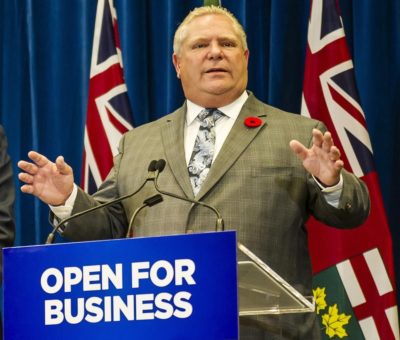
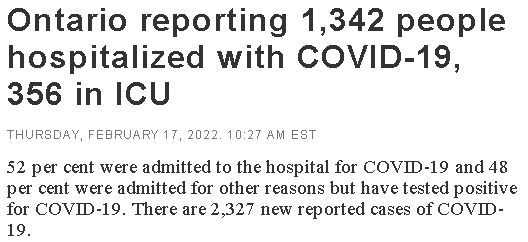 “Dr. Moore’s phenomenal, but you know something, he’s reasonable, too. He’s reasonable, he gets it, he understands the economy,” Mr. Ford said. “Thank God, on March 1, we’re moving forward out of this … I just can’t wait.”
“Dr. Moore’s phenomenal, but you know something, he’s reasonable, too. He’s reasonable, he gets it, he understands the economy,” Mr. Ford said. “Thank God, on March 1, we’re moving forward out of this … I just can’t wait.”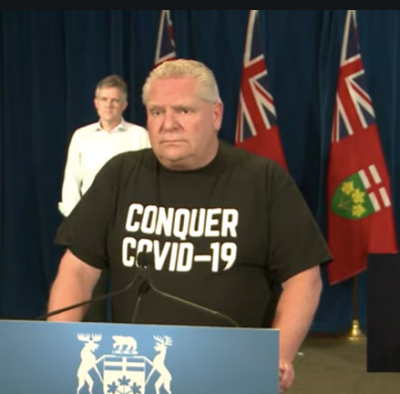

















 By Ray Rivers
By Ray Rivers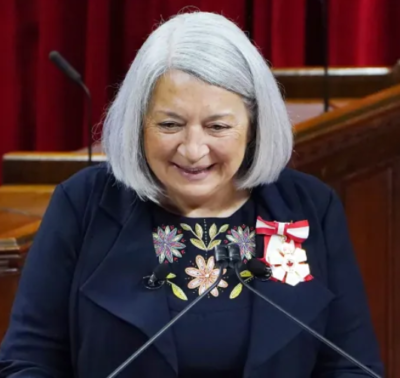
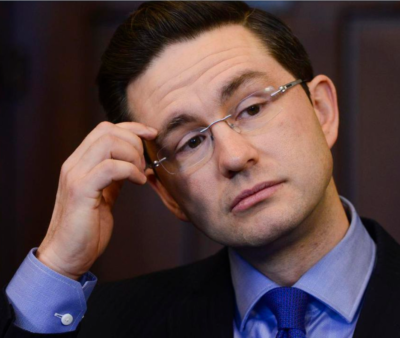

 There may be a song and movie about the Freedom Convoy, but probably only if the leaders of this protest really do go ahead with their attempt at a coup d’état. They haven’t come to Ottawa just for the drive. But Parliament is not in session, the prime minister is not in Ottawa and MPs have been told to stay away. So nothing exciting may take place, and with a bit of luck they’ll go home in peace.
There may be a song and movie about the Freedom Convoy, but probably only if the leaders of this protest really do go ahead with their attempt at a coup d’état. They haven’t come to Ottawa just for the drive. But Parliament is not in session, the prime minister is not in Ottawa and MPs have been told to stay away. So nothing exciting may take place, and with a bit of luck they’ll go home in peace. Ray Rivers, a Gazette Contributing Editor, writes regularly applying his more than 25 years as a federal bureaucrat to his thinking. Rivers was once a candidate for provincial office in Burlington. He was the founder of the Burlington citizen committee on sustainability at a time when climate warming was a hotly debated subject. Ray has a post graduate degree in economics that he earned at the University of Ottawa. Tweet @rayzrivers
Ray Rivers, a Gazette Contributing Editor, writes regularly applying his more than 25 years as a federal bureaucrat to his thinking. Rivers was once a candidate for provincial office in Burlington. He was the founder of the Burlington citizen committee on sustainability at a time when climate warming was a hotly debated subject. Ray has a post graduate degree in economics that he earned at the University of Ottawa. Tweet @rayzrivers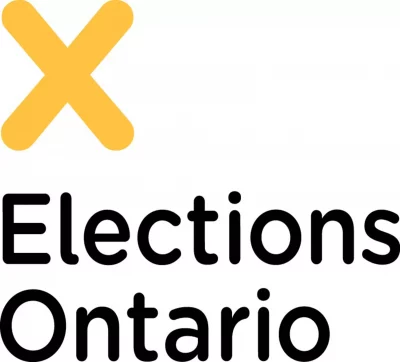 Do we re-elect Doug Ford? Personally I wouldn’t. In my view the smartest thing we can do, if we must, is return the Conservatives as a minority government.
Do we re-elect Doug Ford? Personally I wouldn’t. In my view the smartest thing we can do, if we must, is return the Conservatives as a minority government.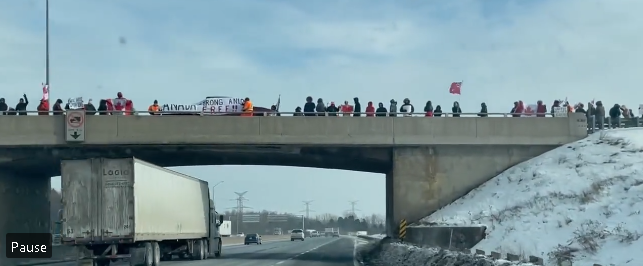

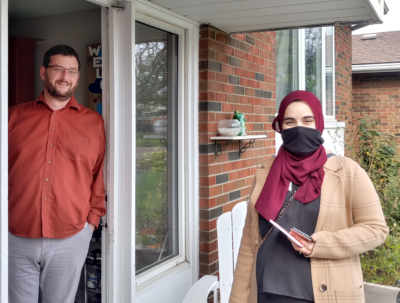

 By Ed
By Ed 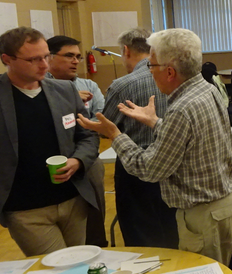
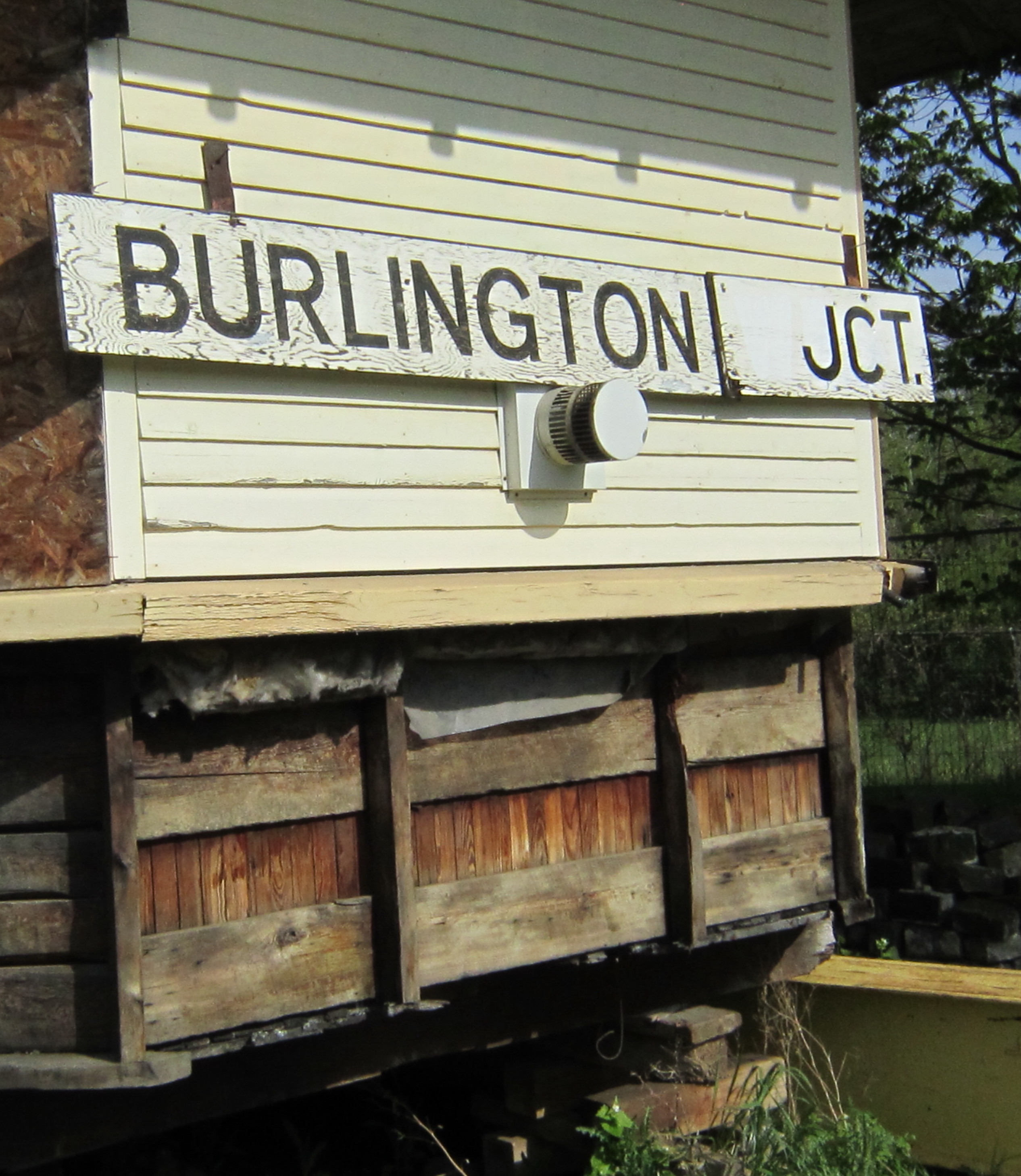
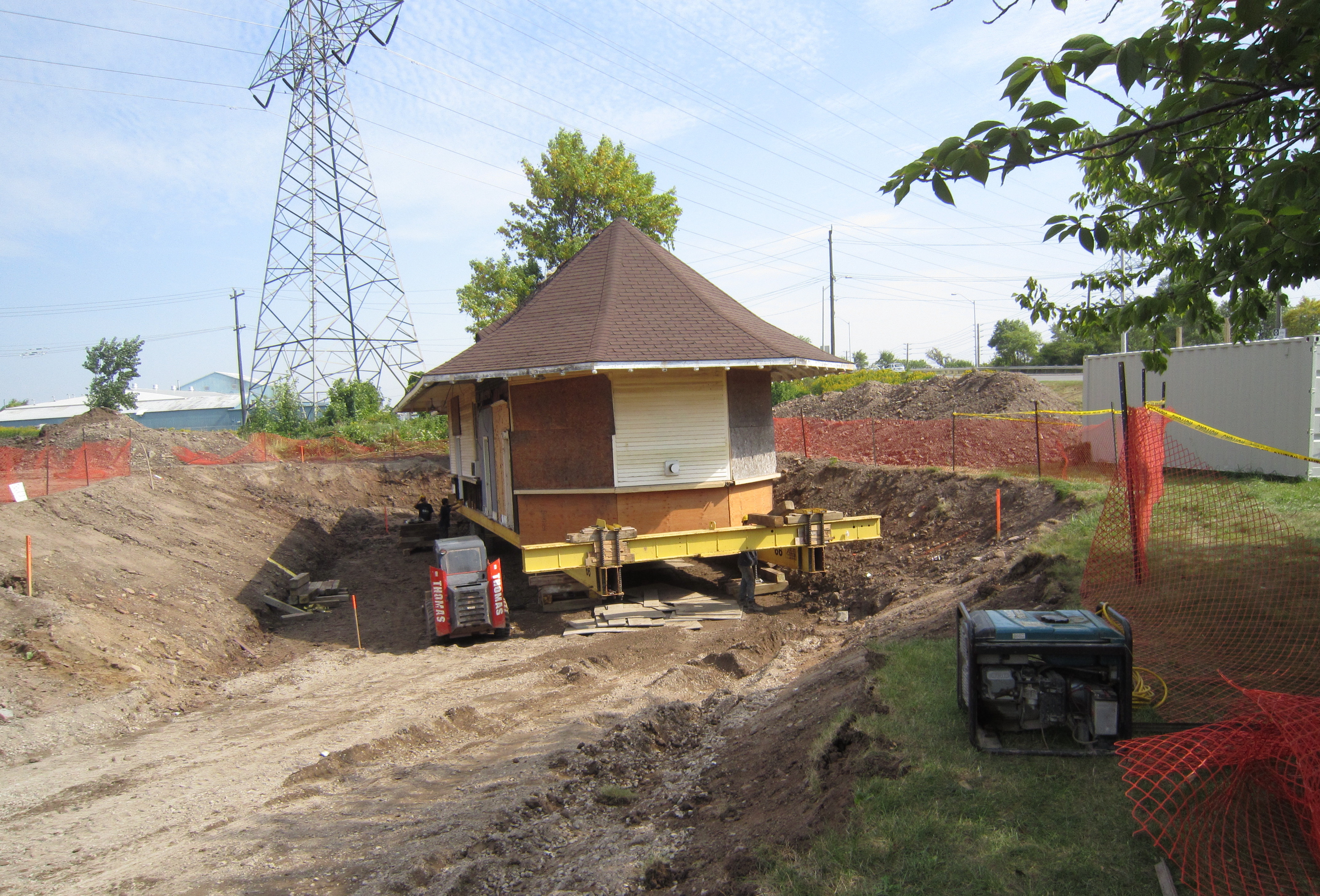
 Currently they have spread out a large number of tools and other items at the station. Some of
Currently they have spread out a large number of tools and other items at the station. Some of By Ray Rivers
By Ray Rivers
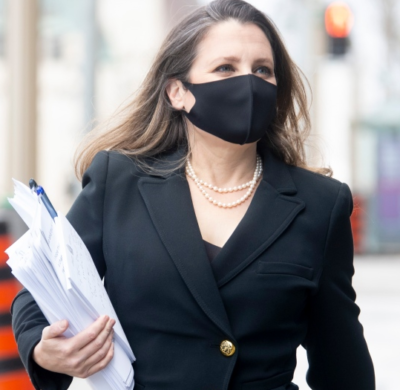


 Welcome everyone and thank you for joining us today for the 2022 State of the City address.
Welcome everyone and thank you for joining us today for the 2022 State of the City address. Focusing for a moment on the year that just passed and the many challenges we have collectively faced both here in Burlington and around the world, it is tremendously important to take the time to appreciate those who kept us safe, healthy and supported.
Focusing for a moment on the year that just passed and the many challenges we have collectively faced both here in Burlington and around the world, it is tremendously important to take the time to appreciate those who kept us safe, healthy and supported. Burlington City Council – including myself as Mayor – had an ambitious to-do list when we took office more than three years ago. Working closely with city leadership and staff, we hit the ground running in 2019 and — despite a global pandemic — the business of the city has forged ahead.
Burlington City Council – including myself as Mayor – had an ambitious to-do list when we took office more than three years ago. Working closely with city leadership and staff, we hit the ground running in 2019 and — despite a global pandemic — the business of the city has forged ahead. In 2018, our community made it clear that their No. 1 concern was ensuring growth was better managed in Burlington. People wanted us to put a stop to the excessive heights and density of new buildings that were being approved — especially in our downtown core — and preserve the history, character and small-town feel that makes our city so wonderful. People told us they wanted greenspaces protected – and more of them created with new builds – that transit needed to be prioritized to help mitigate growing traffic congestion, and that neighborhood amenities and community centres had to be a priority.
In 2018, our community made it clear that their No. 1 concern was ensuring growth was better managed in Burlington. People wanted us to put a stop to the excessive heights and density of new buildings that were being approved — especially in our downtown core — and preserve the history, character and small-town feel that makes our city so wonderful. People told us they wanted greenspaces protected – and more of them created with new builds – that transit needed to be prioritized to help mitigate growing traffic congestion, and that neighborhood amenities and community centres had to be a priority. The way we are achieving this is two-fold.
The way we are achieving this is two-fold. In the past three years, we have remained a growing city, we have just been getting more strategic about it:
In the past three years, we have remained a growing city, we have just been getting more strategic about it: Despite an incredibly challenging landscape since March 2020, due to the pandemic, especially in our restaurant and service sectors, we have also seen many local businesses continue to grow and thrive — and new ones locate their businesses here in Burlington.
Despite an incredibly challenging landscape since March 2020, due to the pandemic, especially in our restaurant and service sectors, we have also seen many local businesses continue to grow and thrive — and new ones locate their businesses here in Burlington. Constituents and businesses repeatedly expressed concern they wanted a Mayor and Council who would be fiscally-responsible, keep taxes low, and ensure every dollar was spent wisely at the City.
Constituents and businesses repeatedly expressed concern they wanted a Mayor and Council who would be fiscally-responsible, keep taxes low, and ensure every dollar was spent wisely at the City. When comparing ourselves to other Halton municipalities, such as Oakville, Milton and Halton Hills, along with other nearby cities, like Mississauga and Hamilton, Burlington’s tax increases are reasonable and on par. They were slightly higher than the average in
When comparing ourselves to other Halton municipalities, such as Oakville, Milton and Halton Hills, along with other nearby cities, like Mississauga and Hamilton, Burlington’s tax increases are reasonable and on par. They were slightly higher than the average in  Moving on to high-service levels — since 1998, the City of Burlington has regularly conducted a community survey to uncover resident satisfaction. The surveys typically happen every 2-4 years, with the most recent surveys being in 2015, 2019 and 2021. The statically-valid survey provides an important opportunity for benchmarking and to monitor progress of community measures over time. This time, for the
Moving on to high-service levels — since 1998, the City of Burlington has regularly conducted a community survey to uncover resident satisfaction. The surveys typically happen every 2-4 years, with the most recent surveys being in 2015, 2019 and 2021. The statically-valid survey provides an important opportunity for benchmarking and to monitor progress of community measures over time. This time, for the  During the last campaign and throughout this term, residents consistently and emphatically asked us to address the global climate crisis at a local level by protecting greenspace, trees and rural farmland, mitigating flood risk, and reducing our carbon footprint.
During the last campaign and throughout this term, residents consistently and emphatically asked us to address the global climate crisis at a local level by protecting greenspace, trees and rural farmland, mitigating flood risk, and reducing our carbon footprint. With a growing city that attracts new residents and businesses, traffic congestion is an issue that council consistently hears about from our residents. We know traffic flow on major streets is a concern, as is parking and noise from loud vehicles all across the city.
With a growing city that attracts new residents and businesses, traffic congestion is an issue that council consistently hears about from our residents. We know traffic flow on major streets is a concern, as is parking and noise from loud vehicles all across the city. Residents throughout Burlington raised concerns for many years of not feeling heard, respected or welcome at city hall. They identified a combative, unprofessional atmosphere where they didn’t feel comfortable coming forward with concerns and ideas. They told us on the campaign trail that they expected better and this Council promised to deliver that.
Residents throughout Burlington raised concerns for many years of not feeling heard, respected or welcome at city hall. They identified a combative, unprofessional atmosphere where they didn’t feel comfortable coming forward with concerns and ideas. They told us on the campaign trail that they expected better and this Council promised to deliver that. This is a great time to share a bit of insight from each councillor with you as we look at successes and learnings so far in this term.
This is a great time to share a bit of insight from each councillor with you as we look at successes and learnings so far in this term. We continue to have an experienced City Manager at the City of Burlington who is committed to collaboration and truly exemplifies integrity in Tim Commisso.
We continue to have an experienced City Manager at the City of Burlington who is committed to collaboration and truly exemplifies integrity in Tim Commisso. Back to our deliverables and moving along in our agenda to issues that rose up and became essential to address as we moved through our term.
Back to our deliverables and moving along in our agenda to issues that rose up and became essential to address as we moved through our term. And how can I not mention the biggest initiative at all that we didn’t see coming – a global pandemic.
And how can I not mention the biggest initiative at all that we didn’t see coming – a global pandemic. Many initiatives and relationships have taken shape and been strengthened this term that has elevated our profile locally as well as internationally.
Many initiatives and relationships have taken shape and been strengthened this term that has elevated our profile locally as well as internationally. On to the last part of our agenda: Looking forward. We have exciting priorities ahead for 2022 and beyond.
On to the last part of our agenda: Looking forward. We have exciting priorities ahead for 2022 and beyond. We know that housing affordability is one of the biggest issues facing urban communities across Canada and especially in the GTA. The Canadian Real Estate Association says 2021 was the busiest year ever for Canada’s housing market, with
We know that housing affordability is one of the biggest issues facing urban communities across Canada and especially in the GTA. The Canadian Real Estate Association says 2021 was the busiest year ever for Canada’s housing market, with  With Superbowl LVI just a few short weeks away, I am reminded of this quote from legendary football coach Vince Lombardi:
With Superbowl LVI just a few short weeks away, I am reminded of this quote from legendary football coach Vince Lombardi:
 By Pepper Parr
By Pepper Parr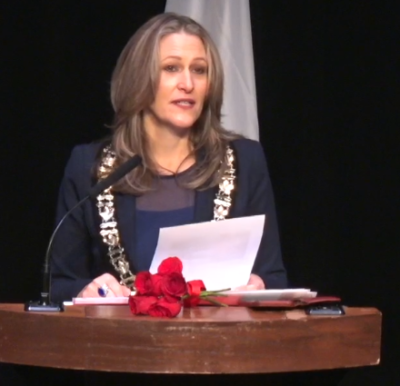
 By Pepper Parr
By Pepper Parr He suggested that we ask the Liberals who represent Burlington in the House of Commons why why Canadians are being ripped off by paying HST on this compulsory Covid19 PCR tests.
He suggested that we ask the Liberals who represent Burlington in the House of Commons why why Canadians are being ripped off by paying HST on this compulsory Covid19 PCR tests. I taught some French, music and drama, and before I left gifted my guitar to a promising young music student. Burlington’s MP (Hon) Karina Gould’s office had passed along some Canadian lapel flag pins which were well received by the students. We were billeted by the parents and literally became part of their families, struggling with the language but sharing meals and laughs and stories of who we are.
I taught some French, music and drama, and before I left gifted my guitar to a promising young music student. Burlington’s MP (Hon) Karina Gould’s office had passed along some Canadian lapel flag pins which were well received by the students. We were billeted by the parents and literally became part of their families, struggling with the language but sharing meals and laughs and stories of who we are.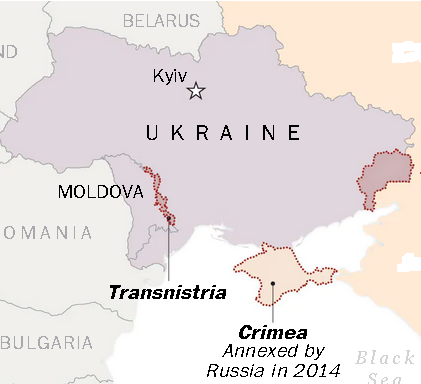 It was as if they were ashamed and embarrassed – unsure if they were to blame in some small way – perhaps their nation had moved too quickly to expand its horizons, promote a market economy, embrace democracy and adopt other western ideals. Almost like a battered spouse or victim of bullying would react, they couldn’t wait for the topic to change. It hurt too much to talk about it.
It was as if they were ashamed and embarrassed – unsure if they were to blame in some small way – perhaps their nation had moved too quickly to expand its horizons, promote a market economy, embrace democracy and adopt other western ideals. Almost like a battered spouse or victim of bullying would react, they couldn’t wait for the topic to change. It hurt too much to talk about it.
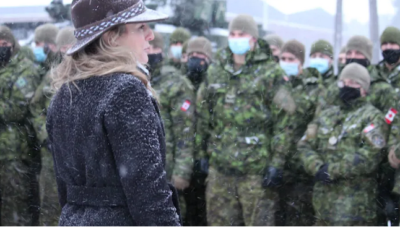
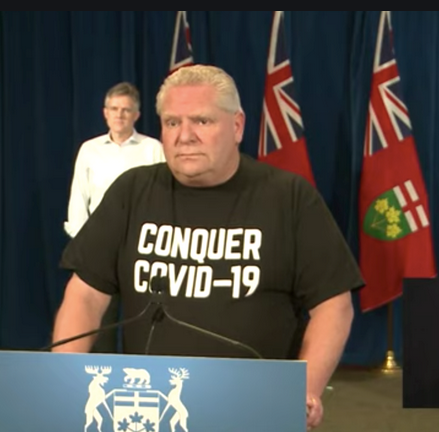 Yesterday Premier Doug Ford announced when and how he would open up the province and return to normal business.
Yesterday Premier Doug Ford announced when and how he would open up the province and return to normal business. By Pepper Parr
By Pepper Parr

 The “pride” flag is a lie.
The “pride” flag is a lie. By Mike Collins-Williams
By Mike Collins-Williams There is no silver bullet solution to the housing crisis. We all need to work together – The private sector, the non-profit sector and all three levels of government. I strongly believe that this is the most important opportunity to develop the effective partnerships we all need to successfully address the housing crisis.
There is no silver bullet solution to the housing crisis. We all need to work together – The private sector, the non-profit sector and all three levels of government. I strongly believe that this is the most important opportunity to develop the effective partnerships we all need to successfully address the housing crisis. Mike Collins-Williams is the CEO of West End Home Builders Association (WEHBA) . He is a Registered Professional Planner and is a member of the Burlington’s Housing Strategy Task Force
Mike Collins-Williams is the CEO of West End Home Builders Association (WEHBA) . He is a Registered Professional Planner and is a member of the Burlington’s Housing Strategy Task Force  By Don Fletcher
By Don Fletcher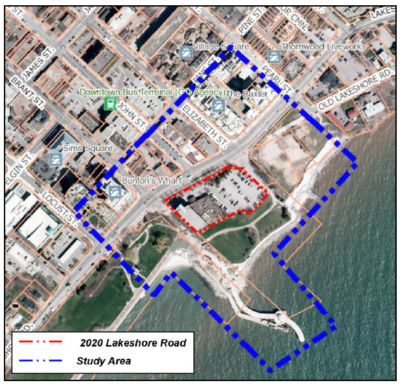
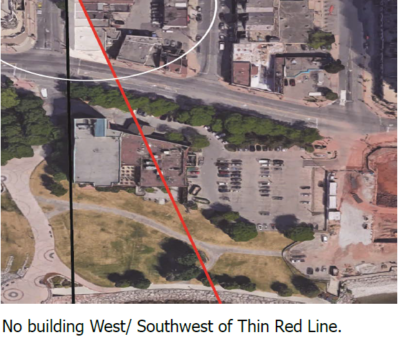
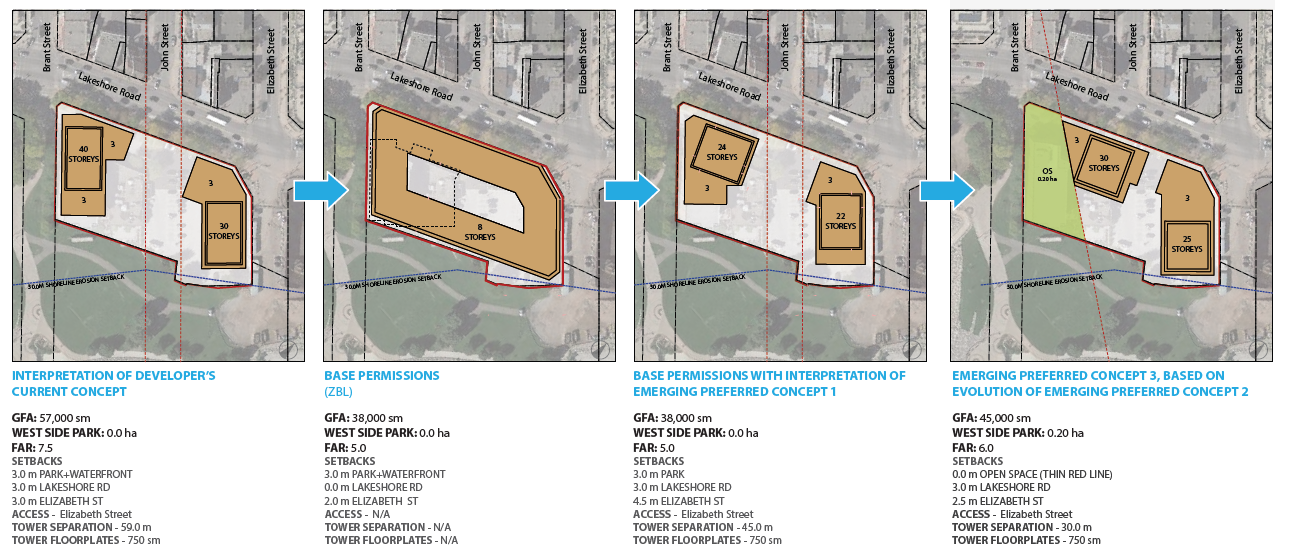
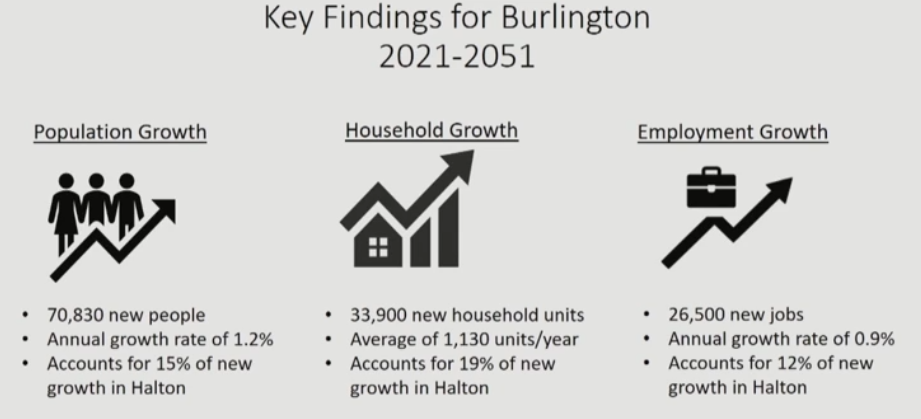
 Tom Muir is an Aldershot resident who has delegated to city council on numerous occasions. A retired federal civil servant Muir likes to ski at Aspen. He can’t wait for travel restrictions to be lifted.
Tom Muir is an Aldershot resident who has delegated to city council on numerous occasions. A retired federal civil servant Muir likes to ski at Aspen. He can’t wait for travel restrictions to be lifted.

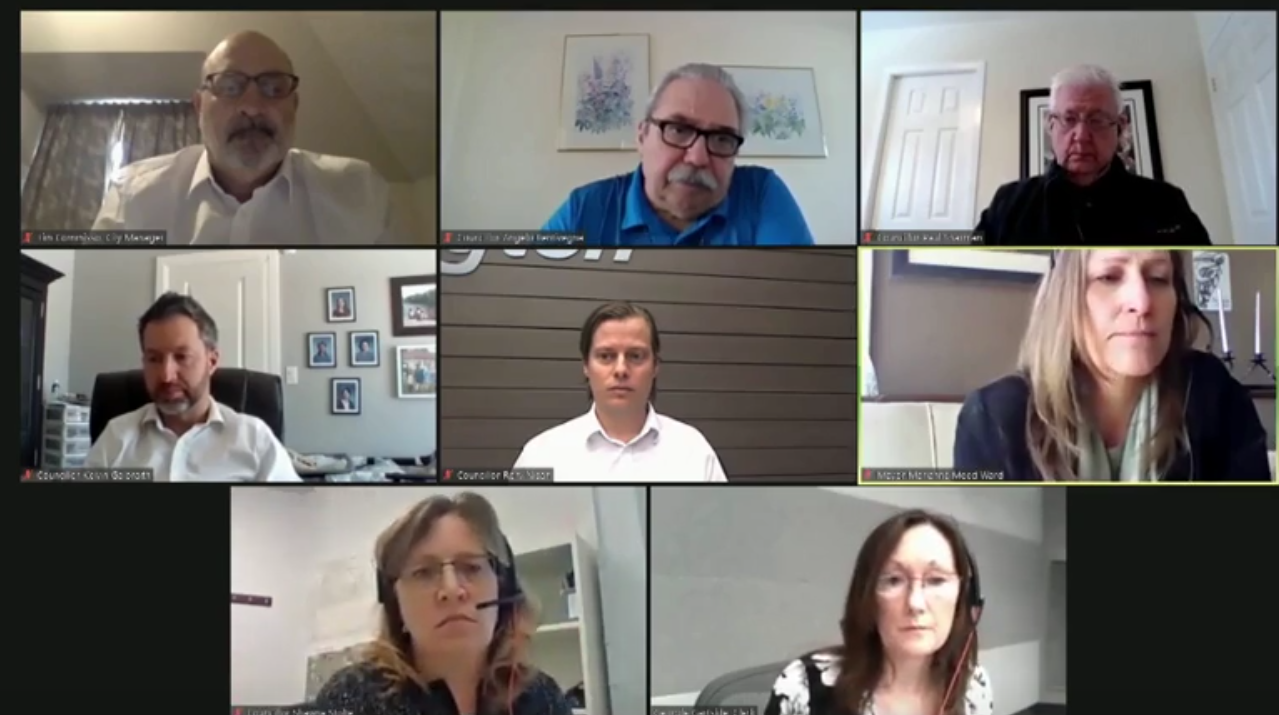
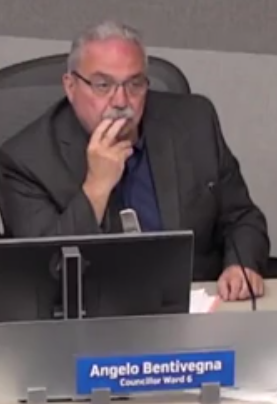
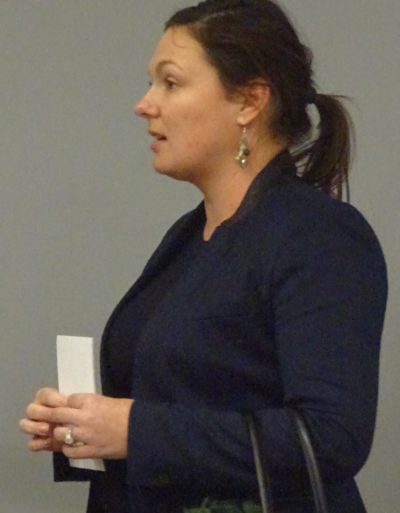
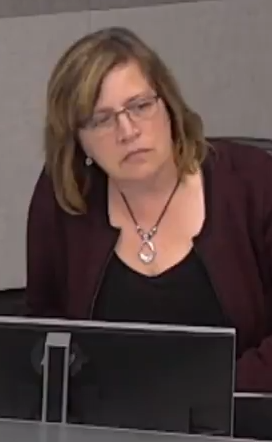

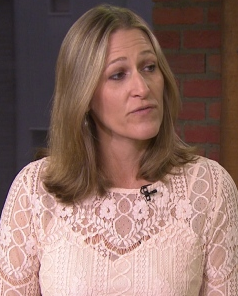
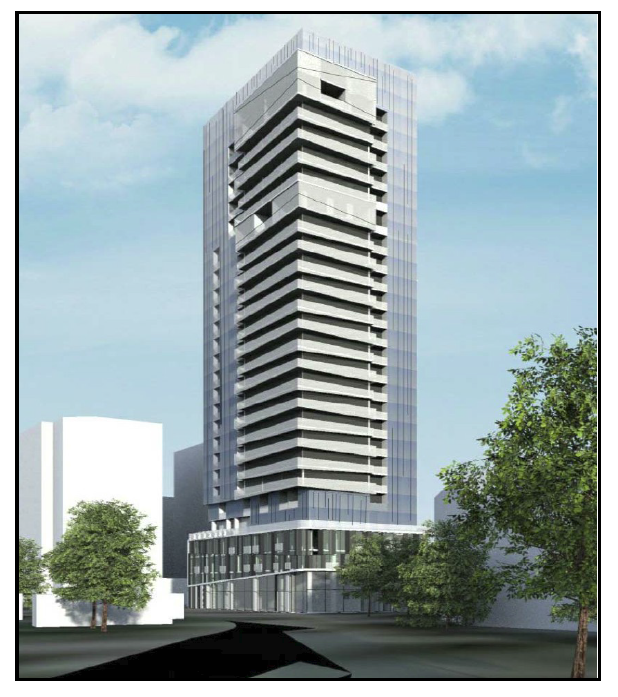
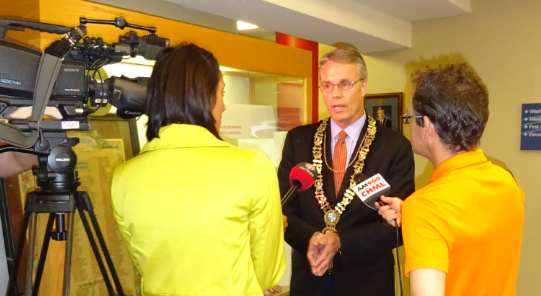
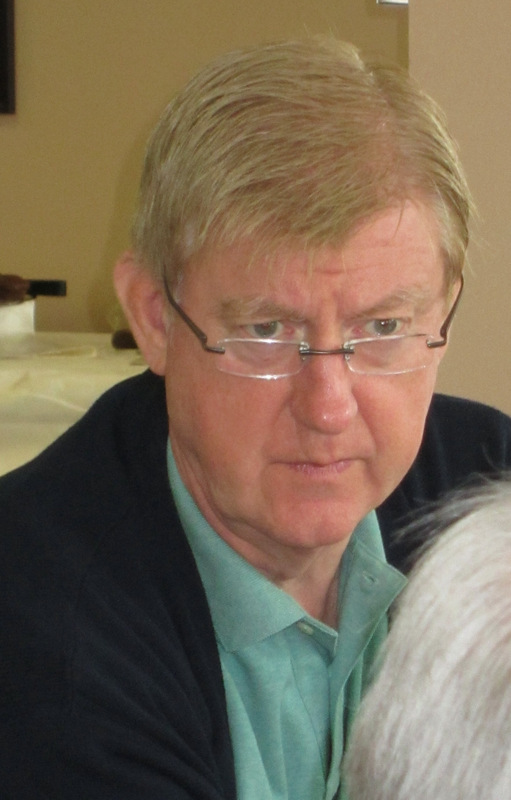

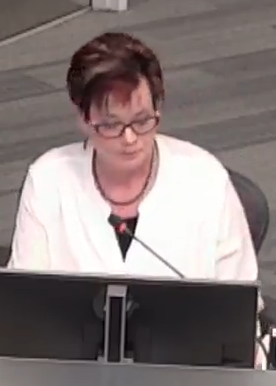 Were Tim Commisso, the City Manager and Sheila Jones the best Executive Director the city has to both be coping with the Omicron variant at the same time the city would be in close to dire straights.
Were Tim Commisso, the City Manager and Sheila Jones the best Executive Director the city has to both be coping with the Omicron variant at the same time the city would be in close to dire straights.
